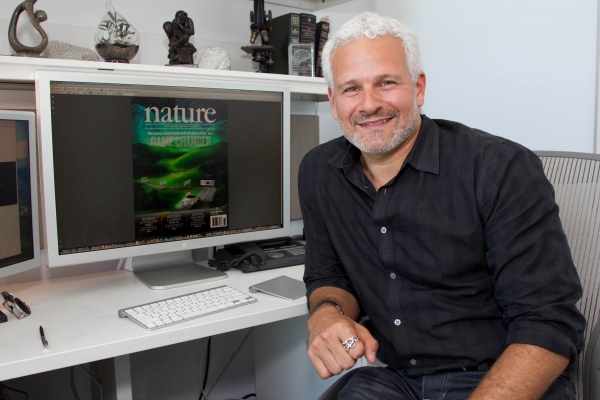UCSF 2.0: Creating Transformative Partnerships

Adam Gazzaley, PhD, associate professor of neurology, physiology and psychiatry and director of the Neuroscience Imaging Center -- and colleagues are reporting in the journal Nature that they have found a way to reverse some of the negative effects of aging on the brain, using a video game designed to improve cognitive control. Photo by Susan Merrell
No single institution can address the next decade's health, research and education challenges on its own. As players from a wide range of industries continue to venture into health and health care, it will be imperative for UC San Francisco to form new partnerships to address familiar health challenges in creative, novel ways.

UCSF Sets Future Vision
► Creating Transformative Partnerships
► Bringing Precision to Health
► Converting Data to Knowledge, Insight and Action
That's the prescription for progress to emerge from the UCSF 2.0 planning initiative that challenged faculty, staff and students to think about the future of UCSF in the next decade and beyond. UCSF has actively increased its portfolio of partnerships in the past few years, announcing several major projects this year alone.
Most recently, UCSF formed a new collaboration between the Institute for Neurodegenerative Diseases and the Japan-based global pharmaceutical company Daiichi Sankyo Co., Ltd. This joint venture, capitalizing on the Nobel-prize winning research of Stanley Prusiner, MD, is focusing on developing therapeutics and molecular diagnostics for multiple neurodegenerative diseases.
One big idea to emerge from the UCSF 2.0 planning exercise is for UCSF to lead the creation of a Bio Silicon Valley, taking advantage of its close proximity to the Bay Area’s innovation milieu by bridging biological, social, and technological sciences to revolutionize biomedical research.
Neuroscientist Adam Gazzaley, MD, PhD, director of the UCSF Neuroscience Imaging Centerand a faculty member since 2004, is among a group of innovators who are doing just that. He partnered with Swartz Center at UC San Diego and Nvidia, which makes high-end computational computer chips, to create a new imaging technology called GlassBrain. The technology allows him to view the brain without using a big imaging machine or wiring the patient to a computer with the ultimate aim to find treatments for a variety of brain diseases, including Alzheimer’s and multiple sclerosis.
Gazzaley, an associate professor of neurology, physiology and psychiatry, says UCSF can help faculty make the right connections with partners across sectors.
“We need to know what companies are looking for and how to align our goals,” he said. “We just have to point in same direction and appeal to their public interests. What I found in my experience doing this is that we have to demonstrate our value as a real partner and not just be a charity case.”
UCSF can also help by embracing the entrepreneurial spirit by providing opportunities for faculty and students to share ideas and tools.
“I want us to have a platform that enables us to be more creative and aggressive in thinking how software and hardware can be a new medicine to improve brain health,” Gazzaley said. “Often, high-tech innovations take a decade to move beyond the entertainment industry and reach science and medicine. That needs to change.”